
Surfaces
Scope & Guideline
Fostering Insights into Surface Technology
Introduction
Aims and Scopes
- Surface Chemistry and Interactions:
Research on chemical interactions occurring at surfaces, including adsorption, catalysis, and surface modifications that affect material properties and performance. - Nanomaterials and Nanostructures:
Investigation of nanoscale materials and their unique properties, focusing on synthesis, characterization, and applications in fields such as electronics, catalysis, and biomedicine. - Coatings and Surface Treatments:
Studies on the development and application of various coatings and treatments to enhance surface characteristics, including corrosion resistance, wear resistance, and functionalization of materials. - Electrochemical and Photochemical Properties:
Examination of electrochemical behavior and photochemical processes at surfaces, including sensors, batteries, and photocatalytic applications. - Biocompatibility and Biomedical Applications:
Research on surface modifications aimed at improving biocompatibility for medical applications, such as drug delivery systems, implants, and tissue engineering.
Trending and Emerging
- Sustainable and Green Materials:
A growing trend towards the synthesis and application of sustainable materials, including biodegradable polymers and eco-friendly composites, reflecting a global emphasis on sustainability. - Advanced Nanotechnology Applications:
Research on the applications of nanotechnology in various fields, including energy storage, environmental remediation, and biomedical applications, is increasingly prominent. - Smart and Functional Surfaces:
Emerging interest in the development of smart surfaces that can respond to environmental stimuli, including self-cleaning, superhydrophobic, and anti-fogging properties. - Electrochemical Sensors and Devices:
A surge in research focused on the development and application of electrochemical sensors for environmental monitoring and healthcare, driven by the need for rapid and sensitive detection methods. - Interfacial Engineering in Catalysis:
An increased focus on the engineering of interfaces to enhance catalytic activity and efficiency in chemical reactions, particularly in the context of renewable energy and pollution mitigation.
Declining or Waning
- Traditional Surface Analysis Techniques:
There has been a noticeable decrease in papers focusing solely on classical surface analysis methods, such as basic spectroscopy and microscopy, as newer, more advanced techniques gain prominence. - General Reviews without Novel Insights:
The frequency of general review papers that do not contribute new insights or findings has declined, indicating a shift towards more original research and innovative studies. - Basic Corrosion Studies:
Basic studies on corrosion without a focus on innovative solutions or advanced materials have seen a reduction, possibly due to the increasing emphasis on eco-friendly and advanced corrosion protection mechanisms.
Similar Journals
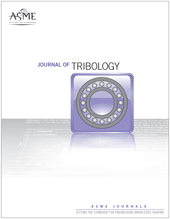
JOURNAL OF TRIBOLOGY-TRANSACTIONS OF THE ASME
Connecting Theory and Application in TribologyJOURNAL OF TRIBOLOGY-TRANSACTIONS OF THE ASME, published by the esteemed American Society of Mechanical Engineers (ASME), is a prominent peer-reviewed journal dedicated to the intricate study of tribological phenomena and their impact on mechanical systems. With an ISSN of 0742-4787 and an E-ISSN of 1528-8897, this journal has been a vital resource since its inception in 1967, covering significant developments in mechanical engineering, mechanics of materials, surfaces, and interfaces. Ranked in the Q2 quartile across multiple categories for 2023, including Mechanical Engineering and Surfaces and Interfaces, it reflects a respectable impact within the research community, with Scopus rankings highlighting its stature in various related fields. While it does not offer open access, its contributions to the understanding of wear, lubrication, and surface engineering are invaluable for researchers, professionals, and students alike, fostering advancements in both academic and industrial applications. With a commitment to disseminating high-quality research, this journal continues to be an essential platform for those seeking to push the boundaries of tribology and its applications.

Protection of Metals and Physical Chemistry of Surfaces
Fostering Collaboration in the Realm of Surface ChemistryProtection of Metals and Physical Chemistry of Surfaces is a prominent academic journal published by MAIK NAUKA/INTERPERIODICA/SPRINGER, which provides a specialized platform for researchers and professionals in the fields of materials chemistry, metals and alloys, organic chemistry, as well as surfaces, coatings, and films. With an ISSN of 2070-2051 and an E-ISSN of 2070-206X, the journal is recognized for its rigorous peer-reviewed content and comprehensive coverage of innovative research addressing the latest advancements in material protection and surface chemistry. As of 2023, the journal has been categorized in the Q3 quartile across several relevant fields, highlighting its increasing influence within the scientific community. Although the journal is relatively niche, its open access model encourages wide dissemination of knowledge, fostering collaboration and advancements within its core disciplines. Research published in this journal plays a crucial role in not only enhancing theoretical understanding but also facilitating practical applications in various industries, thereby underlining its importance for students, researchers, and professionals alike.

JOM
Pioneering research for a sustainable future.JOM, published by Springer, is a leading academic journal dedicated to advancing research in the fields of Engineering and Materials Science. With an ISSN of 1047-4838 and an E-ISSN of 1543-1851, JOM has established itself as a reputable source of scholarly articles, contributing significantly to the understanding and development of materials and their applications in engineering. As of 2023, it ranks in the second quartile (Q2) in both the Engineering (miscellaneous) and Materials Science (miscellaneous) categories, showcasing its influence and academic rigor. With a Scopus rank of #84 in General Engineering and #212 in General Materials Science, JOM is positioned as a vital resource for academics and professionals aiming to stay abreast of the latest research trends and innovations. Although the journal does not currently offer open access options, its commitment to quality publishing continues to make it an essential read for researchers and students alike, fostering a collaborative environment for growth and discovery in the materials science community.
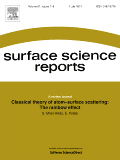
SURFACE SCIENCE REPORTS
Pioneering Research in Surfaces and InterfacesSURFACE SCIENCE REPORTS, published by Elsevier, is a premier journal dedicated to the field of surface science, exhibiting exceptional rigor and relevance in its contributions. With its ISSN 0167-5729 and E-ISSN 1879-274X, this journal has maintained an influential presence since its inception in 1981 and is set to continue its impactful trajectory through 2024. Recognized with a Q1 classification across multiple related disciplines—including Chemistry, Condensed Matter Physics, and Materials Science—it consistently ranks among the top journals, as evidenced by its impressive Scopus rankings, like #4 in Surfaces and Interfaces and #6 in Metals and Alloys. This positions the journal as a critical resource for researchers and professionals seeking cutting-edge insights into the interactions, properties, and applications of surfaces and interfaces. Although the journal follows a traditional subscription model, its comprehensive reviews and scholarly articles make it an invaluable asset for advancing knowledge in this dynamic field. By choosing to publish in SURFACE SCIENCE REPORTS, authors join a distinguished community pushing boundaries in the understanding and technological advancements related to materials and their surface characteristics, fostering collaboration and innovation worldwide.
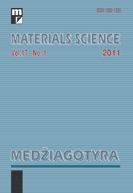
Materials Science-Medziagotyra
Exploring Innovative Materials for a Sustainable FutureMaterials Science-Medziagotyra is a prominent peer-reviewed journal dedicated to the field of materials science, published by Kaunas University of Technology in Lithuania. Since its transition to an Open Access model in 2012, it has facilitated broad dissemination of research findings, enhancing accessibility for researchers and professionals worldwide. This journal is indexed in Scopus and has consistently contributed to the academic community with a focus on innovative materials and their applications, ranking in the Q3 category of Materials Science (miscellaneous) as of 2023. With the responsibility of synthesizing substantial research from 2008 through 2024, Materials Science-Medziagotyra aims to bridge gaps in material research while fostering collaboration among scientists, students, and industry leaders. Its commitment to quality and rigor in scientific discourse underscores its relevance and importance in advancing the field.
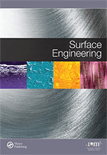
SURFACE ENGINEERING
Driving Excellence in Surface Engineering ScholarshipSURFACE ENGINEERING, published by SAGE Publications Inc, is a premier international journal dedicated to the advancement of knowledge in the fields of material surface science and engineering. With an ISSN of 0267-0844 and E-ISSN 1743-2944, this esteemed journal has been a critical resource since its inception in 1985, and continues to thrive through 2024. Recognized for its impactful contributions, SURFACE ENGINEERING achieves notable rankings in several categories including Q1 in Conservation and Q2 in key areas such as Condensed Matter Physics and Materials Chemistry. The journal serves a diverse audience of researchers, professionals, and students, providing them with insightful research articles, reviews, and technological developments that drive innovation in surface coatings, materials chemistry, and related disciplines. Although the journal follows a traditional subscription model, it remains an essential platform for disseminating crucial findings and fostering collaborations within the scientific community.

CHEMICAL PHYSICS LETTERS
Advancing the Frontiers of Chemical PhysicsCHEMICAL PHYSICS LETTERS, published by Elsevier, is a prestigious journal that has been at the forefront of advancing knowledge in the fields of physical and theoretical chemistry and physics since its inception in 1967. With an impressive impact factor reflective of its high-quality research output, this journal holds Q2 quartile rankings in both the Physical and Theoretical Chemistry and Physics and Astronomy categories for 2023. It is recognized as a key platform for disseminating groundbreaking findings, with Scopus rankings placing it within the top 76th and 66th percentiles in its respective categories. Researchers and professionals benefit from its insightful contributions and rigorous peer-review process, making it an essential resource for those engaged in cutting-edge chemical physics studies. Although the journal is not open access, it remains accessible through various institutional subscriptions, ensuring that a wide audience can explore its wealth of knowledge. Located in Amsterdam, Netherlands, the journal continues to drive innovation and collaboration across diverse scientific disciplines.
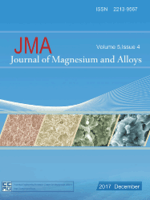
Journal of Magnesium and Alloys
Transforming Materials Science Through Open AccessThe Journal of Magnesium and Alloys is a prestigious, peer-reviewed academic publication dedicated to advancing the field of materials science, particularly focusing on magnesium and its alloys. Published by KEAI PUBLISHING LTD since 2013, this Open Access journal enables unrestricted dissemination of research findings, enhancing global collaboration among researchers, professionals, and students. With an ISSN of 2213-9567 and a significant impact factor, it has established itself in the upper quartiles (Q1) of both the Mechanics of Materials and Metals and Alloys categories, ranking #3 out of 176 and #9 out of 398 respectively according to Scopus. The journal aims to provide a forum for the latest advances in the understanding, production, and application of magnesium alloys, fostering innovation and sustainable practices within the materials engineering community. Based in Beijing, China, the journal is committed to bridging gaps in current knowledge and driving future research directions through its high-quality publications.

SURFACE REVIEW AND LETTERS
Fostering Collaboration in Materials ChemistrySURFACE REVIEW AND LETTERS, published by WORLD SCIENTIFIC PUBL CO PTE LTD, is a pivotal journal in the fields of condensed matter physics, materials chemistry, and surfaces and interfaces. With an ISSN of 0218-625X and an E-ISSN of 1793-6667, this journal serves as a platform for cutting-edge research and innovative developments from 1996 to 2024. Despite its classification in the Q4 and Q3 quartiles for various categories in 2023, SURFACE REVIEW AND LETTERS emphasizes the importance of inter-disciplinary collaboration and the rapid dissemination of valuable insights, making it an essential resource for researchers and professionals eager to stay at the forefront of material science. Although currently lacking an open access option, the journal invites a wide range of submissions—fostering knowledge sharing among scholars and contributing to the advancement of the scientific community. Aspiring authors and readers will benefit from the opportunity to engage with diverse studies and methodologies, underscoring the journal's commitment to excellence in materials research.
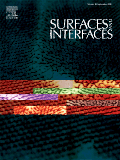
Surfaces and Interfaces
Shaping the Future of Material InteractionsSurfaces and Interfaces is a leading international journal published by Elsevier, dedicated to advancing the understanding of surface and interfacial phenomena across various disciplines, including chemistry, materials science, and physics. With an impressive impact factor placing it in the Q1 quartile for its categories as of 2023—spanning Chemistry, Condensed Matter Physics, and Surfaces, Coatings, and Films—this journal not only serves as a critical platform for innovative research but also reflects the dynamic nature of surface science in contemporary applications. The journal is indexed in Scopus, ranking 25th out of 132 in the Materials Science – Surfaces, Coatings and Films category, marking it in the top 19% of this prestigious field. Although it is not an open-access platform, the journal remains a vital source of curated academic material for researchers, professionals, and students seeking to deepen their knowledge and contribute to ongoing conversations in surface and interface science. Published from the heart of Europe in Amsterdam, Surfaces and Interfaces invites submissions that challenge conventional paradigms and explore the forefront of technology and materials.